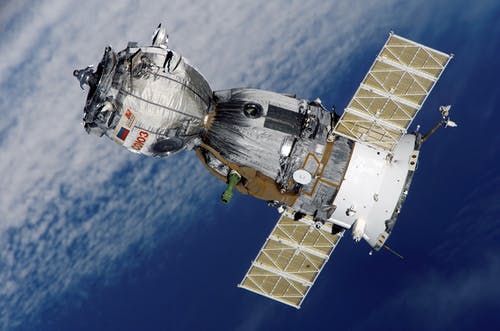Most Notable Developments in Satellite Technology

The space sector of the global economy demonstrates dynamic and stable and Notable Developments, which is associated with the processes of a powerful transfer of space technologies from the military to the civilian sphere, and the Notable Developments on this basis of a whole range of commercial services related to the space industry and development. All this in general contributes to the commercialization of space activities and the rapid growth of the space industry, the Notable Developments and sale of space products, technologies and services, which, in turn, gives a strong impetus to increased industry competition at different levels: global, regional, national, and local.
In turn, the global space market is a large and rapidly growing segment of the global high-tech market. One of the key drivers of modern economic progress is innovative technologies in the field of microelectronics, digital and information systems, software, communications and telecommunications, new composite materials, etc. Most of these developments originate in various areas of the space industry and have a significant impact on the most diverse areas of modern life, mostly via high res images modern satellites offer. But not only that.
We’ll go through some of the most notable satellite tech developments and advances in the past few years to understand how they can affect the space sector and the future of many world industries.
Table of Contents
Agriculture-focused Satellites
Modern satellite technologies in agriculture make it possible to see the picture of farmland so accurately that forecasting the future harvest, optimizing land use, and increasing agricultural production have turned from labor-intensive processes into almost routine procedures. More so, thanks to space commercialization, non-government organizations are also working on launching their own satellites, and the agricultural sector is not an exception.
For instance, EOSDA company plans to launch 7 optical satellites by 2025. The constellation will be oriented towards agriculture, precisely farmlands monitoring, thanks to the unique set of 11 band channels utilized to reflect agricultural needs specifically. The satellites are designed to have a 3 day revisit time and reach a five-year work span. The goal of this project is to enhance the accuracy of satellite monitoring features for the company’s products, helping to tackle climate change, global environmental threats, and more.
GEO over LEO
A geostationary (GEO) satellite “hangs” above a certain point on the equator, exactly following the speed of the Earth’s rotation. This position is advantageous for the following reasons.
Firstly, a quarter of the Earth’s surface is in the line of sight from such a height, so with the help of geostationary satellites it is easy to organize broadcasting within a country or even a continent.
Secondly, the satellite itself is stationary for terrestrial antennas, which greatly facilitates the organization of communication, since it is not necessary to automatically correct the direction of the terrestrial antenna, as is the case for low-orbit and medium-altitude satellites.
Thirdly, a geostationary satellite is located outside the earth’s atmosphere and “wears out” less than low-orbit and medium-altitude satellites. LEO satellites constantly lose altitude due to and they have to restore it with the help of engines.
Along with the advantages of geostationary satellites, there are also disadvantages. The most obvious ones are related to the large distance of the satellite from the Earth’s surface. This leads to large signal propagation delays.
However, there have been major developments in signal capacity enhancement for GEO satellites, enabling them to receive and transmit at hundreds of gigabits per second, running for longer and at greater strength than ever before. This means they will be able to provide broadband internet to developing countries with lower average income among residents.
Communication
The general trend in the global satellite services market is the rapid growth of data transfer rates provided on satellite resources, which meets the basic requirements of modern multimedia applications and meets the development of software and the growth in the volume of data transmitted in the corporate and private segments.
Satellite communication systems are designed to meet the needs of communication and satellite Internet access anywhere in the world. They are needed where increased reliability and fault tolerance are required, and are used for high-speed data transmission in organizing multi-channel telephone communication.
Specialized communication systems have a number of advantages, but the key is the ability to implement high-quality telephony outside the coverage areas of cellular communication stations. Such communication systems make it possible to operate from autonomous power for a long time and be in call waiting mode. This happens due to the low energy performance of user equipment, light-weight, and omnidirectional antennas.
Currently, there are many different satellite communication systems, involving Internet, IoT, and voice services. In addition, each manufacturer offers users an individual set of services, defines a set of functions for each coverage area, and also calculates the cost of satellite equipment and communication services.
Overall, only satellites are able to show us how the Earth is changing so that we could utilize this knowledge to improve decision making across many industries. Also, backed up with modern technology developments, especially in the space sector, the capabilities of satellite tech are growing exponentially, enabling endless possibilities for us to reach sustainable development goals.



